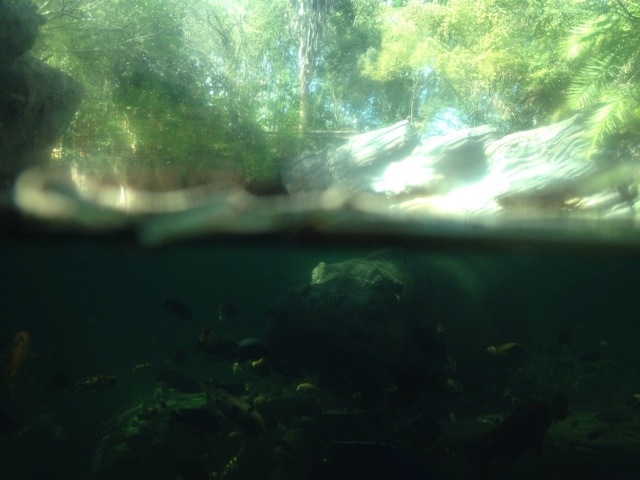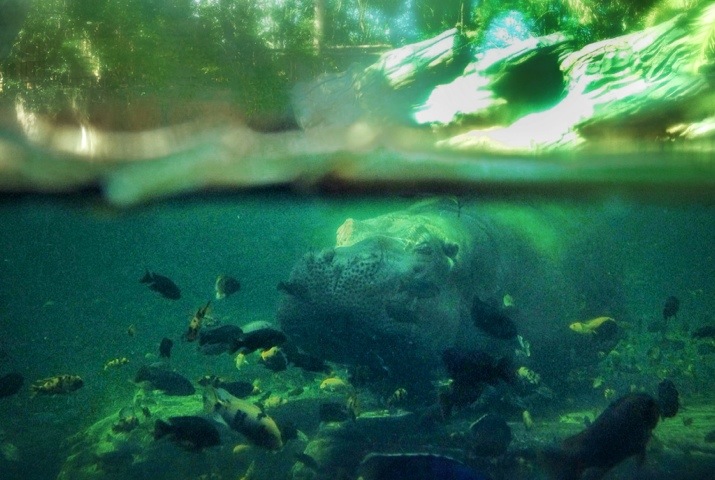Sitting by the pool at our timeshare in Kissimmee, Florida with an iPad and playing with the Snapseed app that I’ve been referring to in the last few blog posts. I can’t recommend this app more highly and though it does cost $4.99 from the app store it is well worth the investment. Typically I use the app to fine tune images that by iPhone camera standards are already pretty good to start with. It has been my experience that post processing images does not often take poor images and make them acceptable but rather makes already good shots even better. Post processing rarely saves an image from the round file. That said I’ve been looking for an image that will take the post processing ability of an app to the limit, just to see what it’s capable of. I think this image fits the bill so before deleting it, it became a good test for Snapseed.
This shot is a challenge even with the best of gear. Normally you would expose for the dark water in the bottom of the image and use (in this case) at least a three stop hard edged ND Grad filter above the water line. With the iPhone 4S camera that is not possible so to take this image I focused over the hippo’s head with the focus point (which is also the metering point) half above and half below the water. The result creates severely blown highlights above the water and very underexposed shadows below the water, but at least there is some detail above and below the water line.
So, here is the original image as taken, clearly a ‘delete only’ capture.
Now, what could Snapseed do with this image? Although I have the app installed on both my phone and iPad, this image was processed on the iPad but could have easily been done directly from the phone. The time to process this image was about five minutes which is one of the advantages of Snapseed, it is very user friendly yet powerful in its scope.
Although this post is not intended as a Snapseed tutorial, in short this is how the shot was processed; water line leveled, image cropped, three different selections above the water level to reduce the blown highlights as much as possible, increase the contrast, adjust the saturation and white balance; one selection below the water line to brighten the water as much as possible, alter the contrast and tweak the white balance. The entire image was then adjusted for ambiance and structure. As is always the case, brightening shadows brings out the noise, which is very evident in the processed image. To date Snapseed has no way of noise reduction but hopefully that will come via way of a future update (NIK software has a fantastic NR program called Define which I use all the time as a CS 5 plug in, so hopefully it will show up some day in Snapseed). As a result of the noise, this image was not sharpened.
So here is the processed image. Still not a ‘keeper’ but a good example of what Snapseed can do when pushed well beyond what is normally necessary. It was a great image to play with and it’s not often you get the opportunity to photograph a hippo under water!
This image was taken in Disney’s Animal Kingdom Theme Park.




Great job dad!
That app is really neat.
88
Thanks Lou, the best thing is that you were were there for that picture!! 88
Well you almost have me convinced to splurge the 4.99 for Snapseed. The hard part will be to get my iPhone out of my pocket and consider using it as a viable camera option.
You will be glad you did Arni……buy the Snapseed I mean. Not so sure about the iPhone based on what you usually reach for to take a picture.